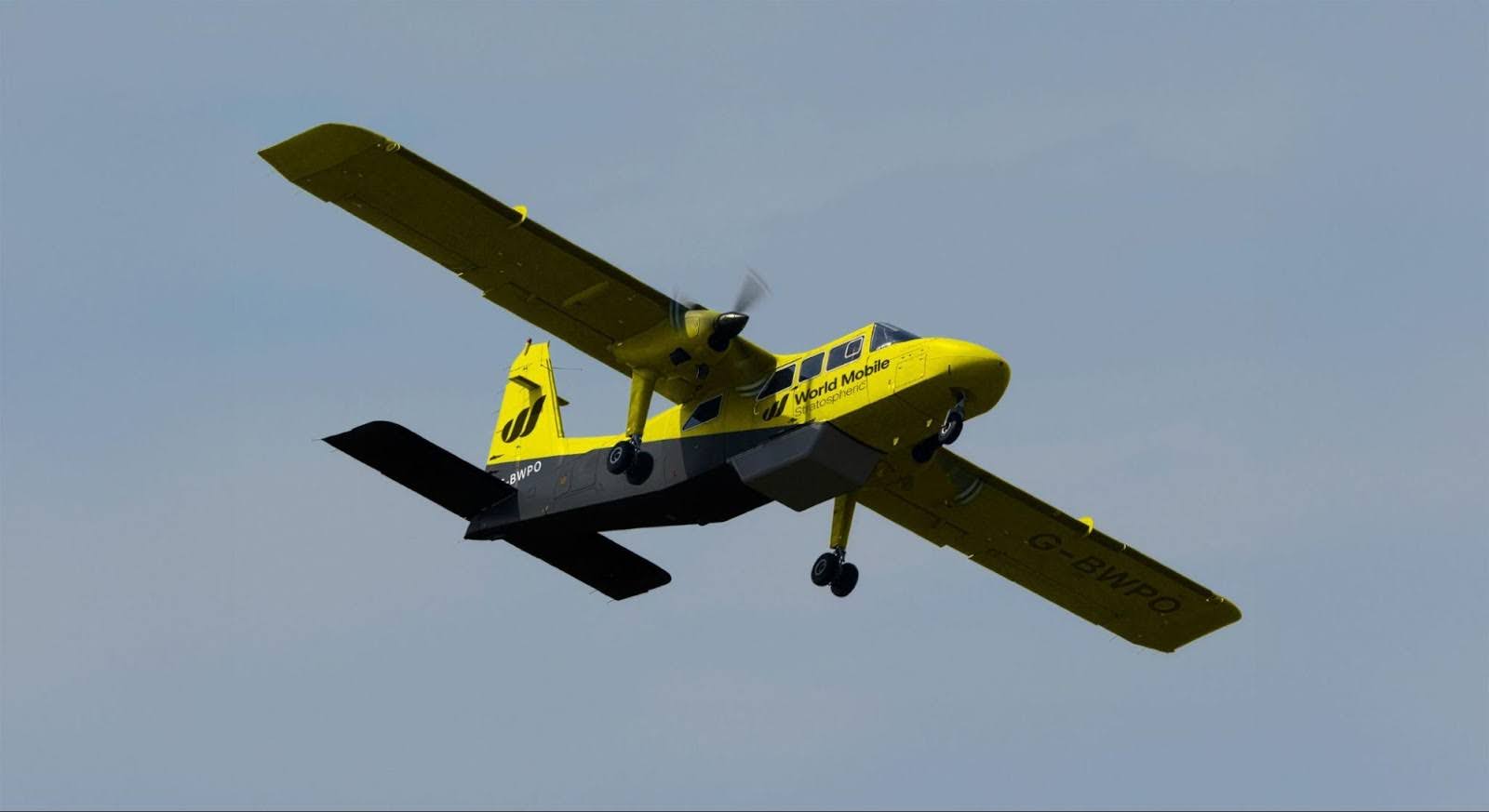A new era of connectivity is being forged in the skies. World Mobile Stratospheric (WMS) and UK aircraft manufacturer Britten-Norman have announced a collaboration to demonstrate airborne 5G connectivity. They’ll be using a BN2T-4S Islander, the workhorse favored for carrying governmental and industrial payloads.
The partnership marks a major step in realizing WMS’s ambitious mission of delivering communications from the stratosphere, connecting millions currently beyond the reach of conventional networks.
Connecting the Unconnected
Airline passengers are prone to associating flight with a lack of 5G data – not a plentiful supply of it. But then the plane to be used in the WMS pilot program is no passenger airline – nor is it looking to boost the 5G signal onboard. Instead, it’s beaming it back to earth, acting as a roving antenna that can be directed to wherever it’s needed.
The project was dreamed up by WMS, a joint venture between global telecom innovator World Mobile Group and Indonesia’s digital infrastructure giant Protelindo. World Mobile is best known for its eponymous blockchain network that serves as the hub for its DePIN wireless data ecosystem.
The program calls for leveraging a Britten-Norman Islander, which will be outfitted with an advanced phased-array antenna system. The testing will assess the aircraft’s capability to support real-time 5G services over a 15-kilometre radius. Its deployment builds upon over a decade of specialist work inherited from the former Stratospheric Platforms Ltd, now fully integrated into WMS.
From the Clouds to the Ground
One of the most impactful applications of the high-altitude 5G technology is emergency response. The Britten-Norman Islander’s capability to operate from short and challenging runways makes it an ideal vehicle. In the event of a natural disaster or man-made crisis, where ground-based infrastructure is damaged or destroyed, a WMS-equipped Islander could be deployed rapidly to re-establish mobile networks. This would provide vital communication links for aid workers and affected communities, assisting recovery efforts.
The initial phase of flight testing is scheduled to take off in mid-2026. Operations will be led by WMS, with Britten-Norman’s flight test organization overseeing system testing. This pivotal work will be conducted in cooperation with BT at their Adastral Park R&D facility in the UK.
If the pilot program goes as well as expected, WMS is keen to roll out a much broader airborne-based 5G network. It ultimately plans to utilize a hydrogen-powered, fixed-wing aircraft capable of operating at altitudes up to 20,000 meters, at which point World Mobile Stratospheric will be truly living up to its name, delivering data from the stratosphere.
This long-term initiative is designed to provide wide-area 5G coverage and support up to 500,000 simultaneous direct-to-handset connections from a single flight, powered by a DePIN sharing economy model. There’s much work to be done before that can occur, of course, but it shows the potential of the technology – which the WMS and Britten-Norman collaboration aims to demonstrate.

































